
How to streamline your checkout process with payment automation
As a business owner, keeping your checkout process smooth and hassle free is essential for customer satisfaction and ensuring more successful sales. Payment automation is one of the best ways to streamline this process, making everything easier for both you and your customers. With automation, all the steps involved in payments from placing an order to sending invoices are handled automatically.
Here’s how payment automation works and why it can be a game changer for your business
Listen to Podcast:
What is payment automation?
Payment automation refers to the use of software tools that automatically manage the various steps involved in receiving payments, sending invoices, and handling refunds. By automating these tasks, businesses reduce the time spent on manual work, improve accuracy, and offer a smoother customer experience. It ensures that all payment-related steps happen seamlessly, with minimal intervention.
Image: Payment to referral request workflow automation
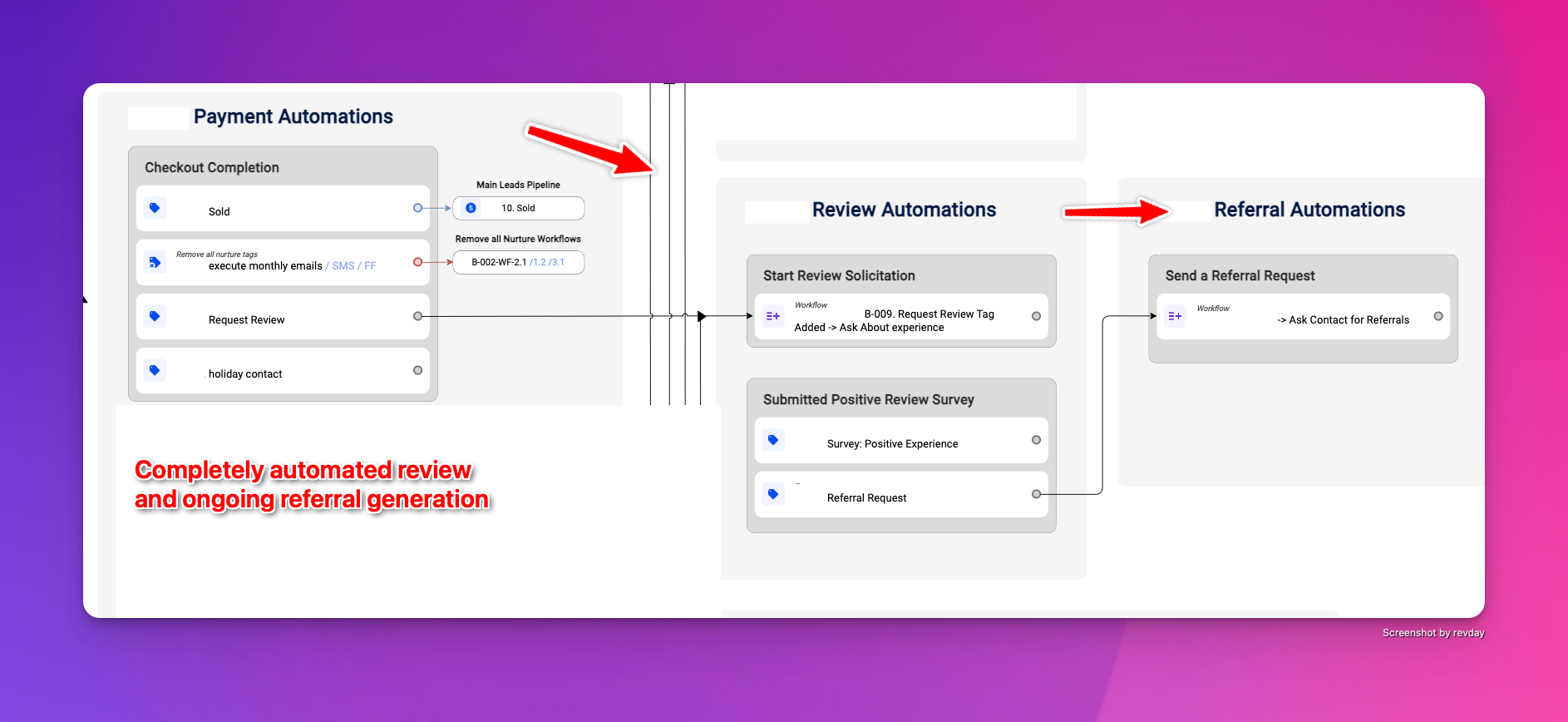
Checkout page configuration
Imagine your customer is browsing your website, they add products to their cart, and they're ready to check out. Instead of building a custom checkout process from scratch, you use an automated checkout page template—like what revday offers—which is easy to configure and intuitive for the customer to use. This ensures the checkout process is smooth and friction-free, reducing the chances of cart abandonment.
Scenario: Let’s say you sell subscription-based products. You can use payment automation to display different payment plans right on the checkout page, helping customers easily compare plans and choose the one that best fits their needs. With revday's solution, all of this can be managed from a single, easy-to-use dashboard.
Image: Pre-built product/service pricing tables
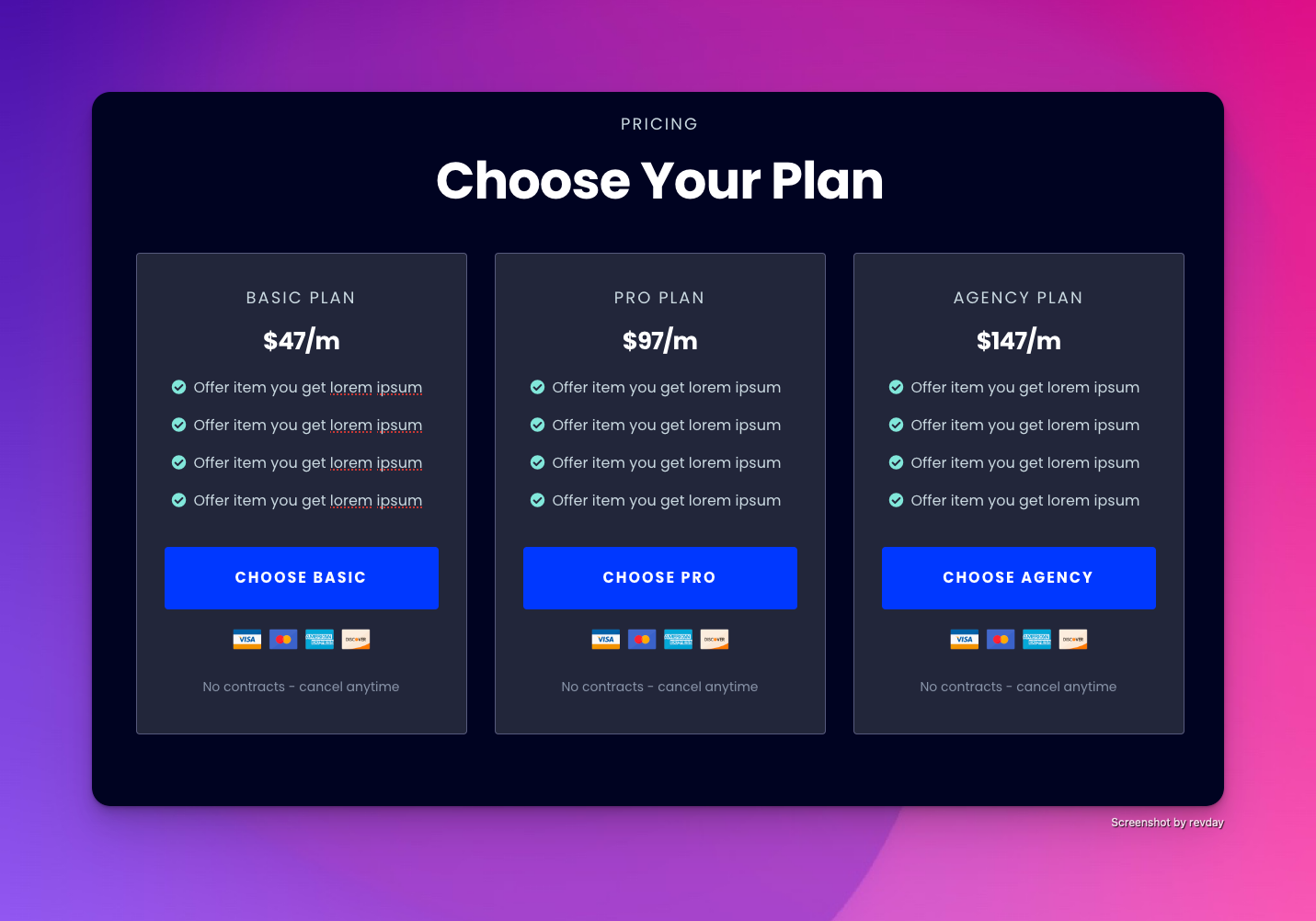
Successful purchase automations
When a customer successfully completes a purchase, you want to immediately confirm their order. revday’s successful purchase automations send out confirmation emails as soon as the transaction goes through, letting your customer know their order was processed successfully.
This kind of immediate response builds trust with your customers, reduces anxiety, and saves you from manually sending out confirmation emails.
Image: Payment automation workflow
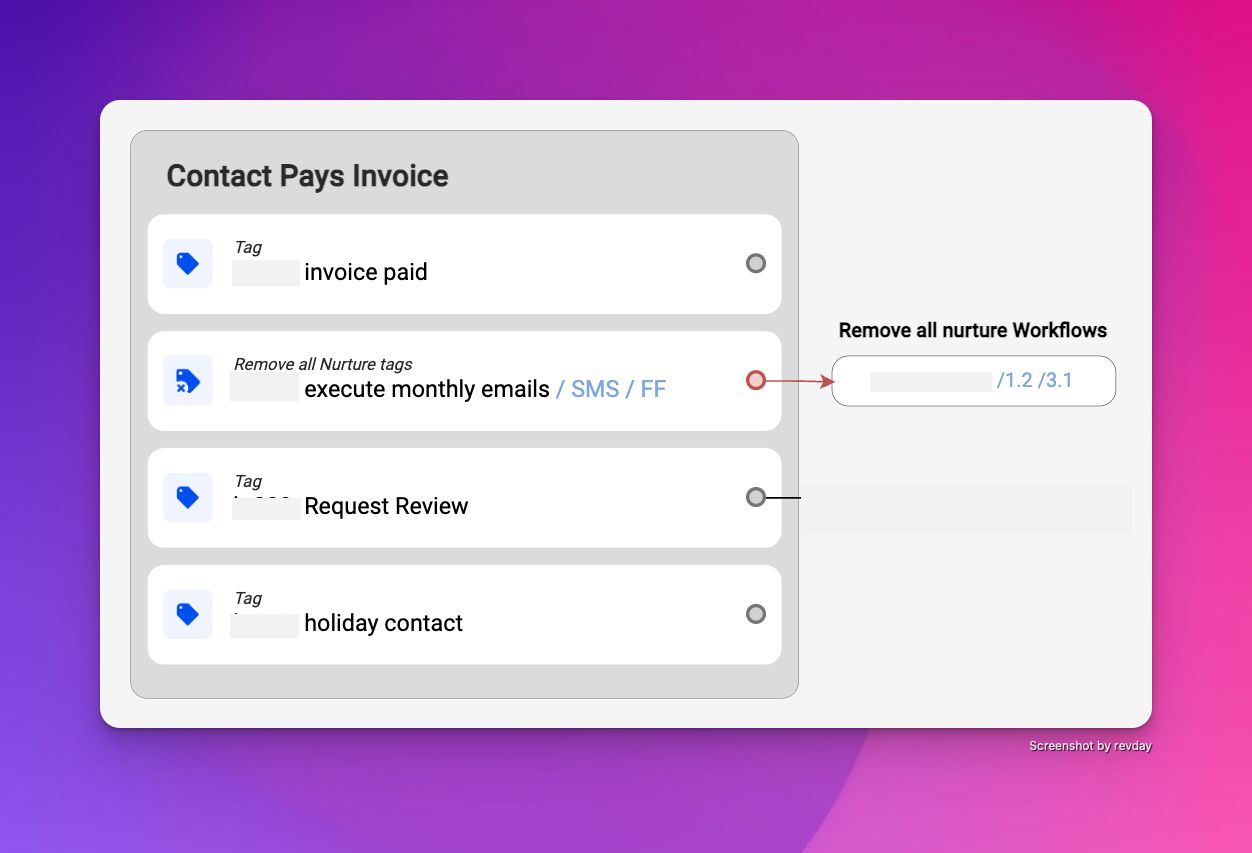
Handling abandoned carts
Let’s say a customer adds items to their cart but doesn’t complete the purchase. Normally, you’d have to manually reach out and remind them, but with revday’s abandoned cart automation, reminders are sent automatically.
This not only helps you recover potential lost sales but also brings customers back to your site without additional effort.
Image: Cart abandonment automation workflow
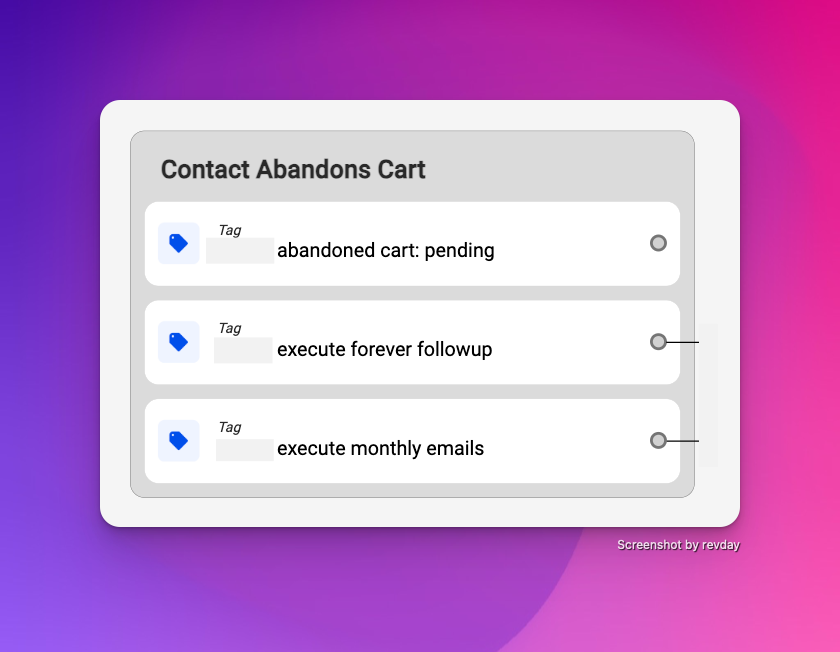
Invoice management
For businesses dealing with invoicing, sending reminders for unpaid invoices can be time-consuming. revday’s invoice automation makes it easy to automatically send invoices to your customers right after a transaction is initiated. If a payment is missed, revday’s system sends out reminders without any input from you.
Imagine running a consulting firm where clients pay in instalments. revday will track which invoices are paid and which ones are overdue, freeing you from chasing payments manually.
Refund requests
Refunds can often be tricky and time-consuming. With revday’s refund request flow, customers can easily request refunds, which are then processed through an automated system. Whether you accept, decline, or ask for more information, the system streamlines the entire process.
For example, if a customer is unsatisfied with a product, they can submit a refund request online. The system flags the request, notifies you, and automatically handles the next steps. This makes the refund process much more efficient, giving both you and the customer a seamless experience.
Image: Refund request automation workflow
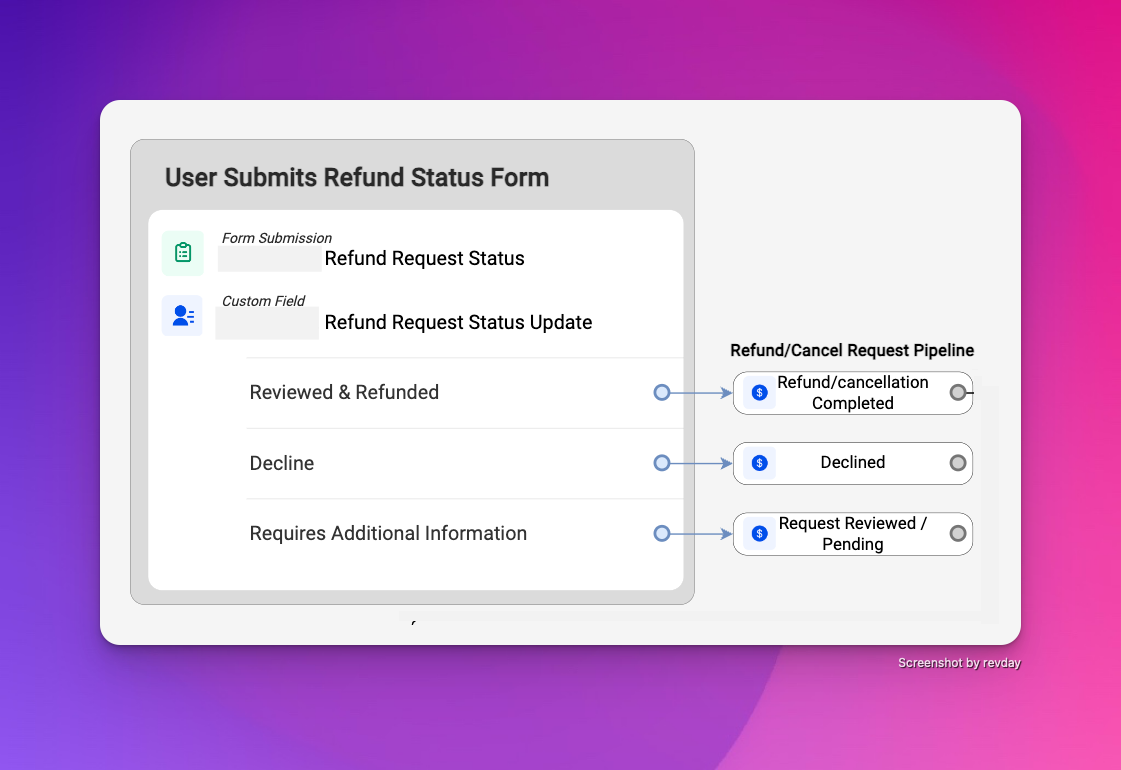
Payment automation is a powerful tool for businesses, making the checkout process faster and easier for both you and your customers. It automates tasks like sending invoices, processing refunds, and following up on abandoned carts. This saves time, reduces manual work, and improves the overall shopping experience. With tools like revday, you can streamline all payment-related steps, ensuring everything runs smoothly with minimal effort. Whether it’s managing subscriptions, tracking invoices, or handling refunds, automation takes care of it all, helping your business grow while keeping customers happy.
